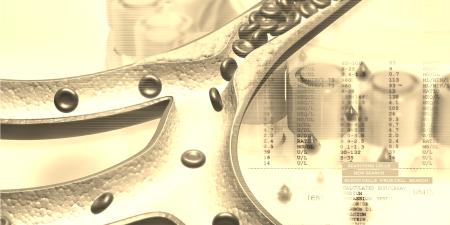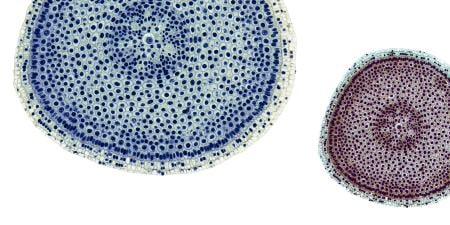Case
Mr. and Mrs. Kendall were quite excited about the newest addition to their family, 2-month-old Janna. But they were anxious on this trip to the doctor. Janna had developed a fever in the middle of the night, and the Kendalls decided to take her to the emergency room. Dr. Stinton, the ER physician on service, heard of the Kendalls' story and decided she'd better see their daughter straight away.
Upon questioning, Dr. Stinton learned that Mrs. Kendall's pregnancy with Janna was perfectly normal, as was her delivery at just over 38 weeks. In fact, until last night, the Kendalls had little reason to be concerned about Janna's health. As they reported, she'd passed all her doctor's visits with flying colors and had begun immunizations according to schedule. In other words, she was overall a healthy infant.
Last night, however, they awoke to cries unlike those they had heard before and ran in to check on Janna. She had no interest in being fed and seemed warm to her mother. She had been irritable throughout the day and less interested in nursing. Mrs. Kendall took Janna's temperature twice rectally, and both times it read 38.3° C. That's when they bundled her up and went to the ER.
On physical exam, Janna was alert and active in her mother's arms, but appeared ill. Her temperature registered 38.4° C. The physical was normal, revealing no obvious foci of infection. A complete blood count in the ER uncovered a slightly elevated white blood cell count (15.5 x 109 cells / Liter) but no other abnormalities. On the basis of these findings, Janna was admitted to the hospital for fever of unknown source; her workup included urinalysis, urine culture, chest radiography, blood cultures, and lumbar puncture. In lieu of lab results, antibiotics were started.
Distressed by the invasiveness of the tests (which lasted well into the early morning hours) and the hospital admission, the Kendalls asked for more information about the likelihood of a serious illness. Dr. Stinton responded that it was hard to say. "The information is quite complex, and we don't want to confuse you. Let's not take any chances." Willing to do whatever it took for Janna to be well, they agreed.
After Janna reached the hospital ward, Mr. Alstadt, a medical student on his clinical clerkship began learning Janna's story through the family's account and ER notes. He diligently prepared for presenting his new patient on rounds later that day.
When the attending asked Mr. Alstadt the reason for Janna's admission, Mr. Alstadt recalled the story and was poised with several sets of clinical guidelines and algorithms from various sources that he had researched overnight.1,2 He quoted beautifully from them, and most of them seemed to support admitting Janna for a full sepsis workup.
The attending physician was not convinced. "Really? Who recommends a full sepsis workup for a moderately ill, 2-month-old infant likely to have reliable follow-up with her parents? In my clinical judgment, this patient should have been sent home last night, maybe after taking a blood culture, but definitely without a lumbar puncture. I think medical school should spend less time teaching you those guidelines and give you more time to really see patients. That's where you learn to practice medicine. Well, she's here now. Let's go see her."
The team walked to Janna's room, where they found an infant whose temperature was now 37.3° C, sleeping pleasantly. Her parents appeared tired, but relieved.
The attending physician glanced at Mr. Alstadt and smiled.
Commentary 1
The case vignette sets the values surrounding evidence-based medicine and the art of medicine in stark contrast to one another, as though educators and students must choose one or the other. I think this false dichotomy might be avoided if we used terms like "evidence-based treatment" or "evidence-based evaluation" instead of "evidence-based medicine," which implies that "evidence" is the be-all and end-all of medical practice rather than a small, albeit important, part. It would also help if we emphasized that what one does with evidence-based information is to apply it with judgment. This is never simple; 2500 years ago, Hippocrates already knew that "experience is fallacious and judgment difficult."1 Real science is our only defense against the fallacy of experience, and an open mind and careful attention to the patient, our only hope for achieving good judgment.
The evidence-based protocols now available derive from statistical analysis of large numbers of patients, assembled according to a specific diagnosis and treated in a standardized way. Such analyses rely on the fact that, in at least some ways (for example, in their shared diagnostic label), those people are similar to one another. They share similarities, but they are not identical. Judgment, on the other hand, represents the application of evidence-based guidelines to this individual person or that individual person (my patient). Judgment attempts to deal with and respond to the ways in which even people with the same diagnosis differ from one another. While I steadfastly support the value of properly conducted science in uncovering what is the best thing to do, in general, I am always fearful that any given patient may be part of the fraction of study subjects who did less well than the majority under the evidence-based protocol. So I try to decide whether the characteristics of my patient make it likely that he or she will respond like the study majority, and—even if I decide "yes"—I need to be constantly vigilant for any clues that we should change course, no matter what the evidence-based guidelines say. I am always mindful of the fact that statistics are "what happened to 100 other people"; no matter how good evidence-based treatment may be in the aggregate, it may be very bad in this individual. So the commitment of the doctor must be not just to prescribe what is best, but also to stay in contact with (and that means to be personally available to) the patient, to be sure that the chosen path was in fact a good one.
Five Percent Science; 95 Percent Judgment?
I agree that scientific data must inform our decisions. But such decisions account for maybe 5 percent of my daily work. The other 95 percent (and some days it is more) is devoted to convincing patients to actually do or continue to do what seems clearly to be the best thing. That is what I would call the Art of Medicine, and it is what consumes most of my time and energy. Let me give you an example. Every day I see patients with obesity and type 2 diabetes. I know that both conditions can (usually) be "cured" by weight loss and exercise. I tell patients but they rarely do either, so I offer them pills and, when these fail, insulin. The questions I ask myself are: do I collude with those patients by agreeing to prescribe medications while they refuse, in word or deed, to do the more important things (lose weight and exercise)? How do I get them to change their lives rather than swallow chemicals, especially when I "know" which is truly best? Should I say "No" as long as they are unwilling to say "Yes" to their part of the bargain? How often do I really try, no matter how recalcitrant the patient, rather than pulling out the prescription pad to truncate the visit and reap the monetary rewards of increased clinical throughput? Evidence-based evaluation and treatment is just the beginning of clinical work.
I would say this about the vignette itself: I think that much more was going on in the scenario than meets the eye. Why was the unnamed attending physician so unhappy with the decisions that were made? The baby was better; Mr. Alstadt learned a lot; the parents were relieved; the hospital made some money. Is the attending physician a "clinical arrogant," unable or unwilling to learn by watching young people do good things that do not spring directly from his own lips? Many years ago, Eugene Stead reminded us that the "most effective teachers create a shadowy framework on which the student can climb" [2], and Morton Bogdonoff once said within my hearing that a teaching hospital is a teaching hospital "because patients teach students who teach interns who teach residents who teach attending physicians." Clinical instructors need to remember those things. On the other hand, was Mr. Alstadt a bit overconfident, presenting his conclusions with such preening arrogance that the attending physician felt compelled to stake out his own territory? All teachers feel that way at some time, and no one profits from it. So the teaching/learning atmosphere could have been much enhanced, if only both participants could achieve a sense of collegial inquiry into whatever evidence-based recommendations are available, and the exercise of good judgment on behalf of the patient.
References
-
Hippocrates, Aphorisms. Adams F, trans. Available at http://classics.mit.edu/Hippocrates/aphorisms.1.i.html Accessed October 28, 2004.
-
Stead EA Jr. The limitations of teaching. Pharos. 1969;32:54-57.



